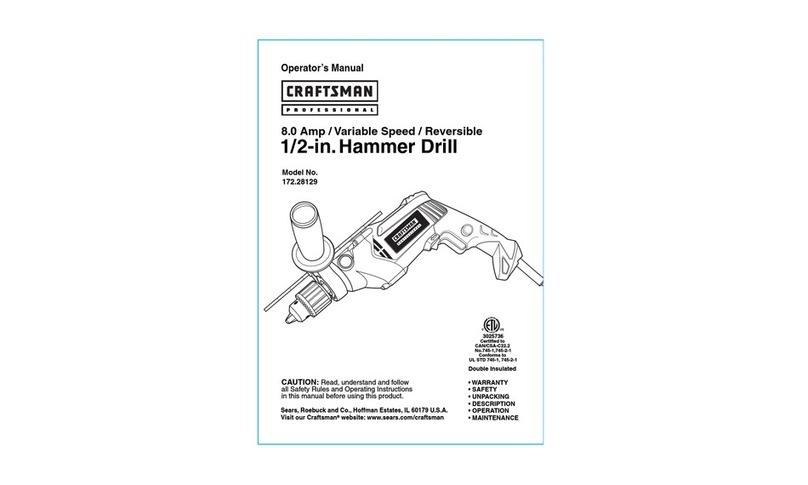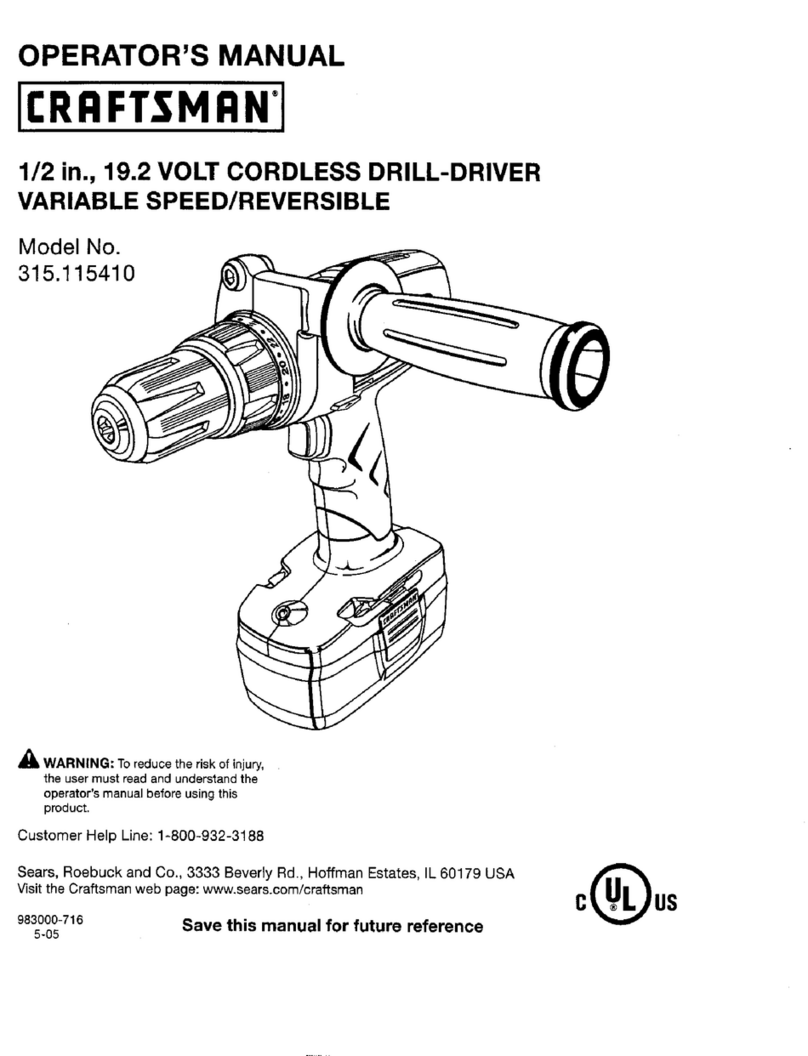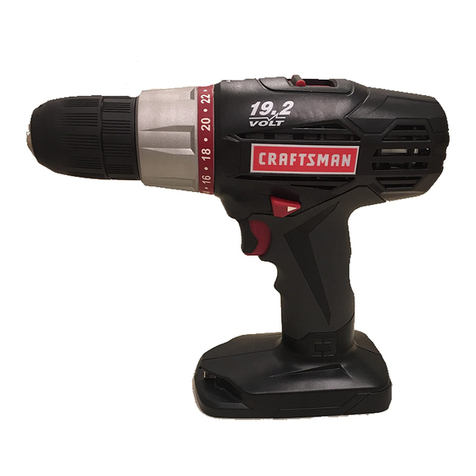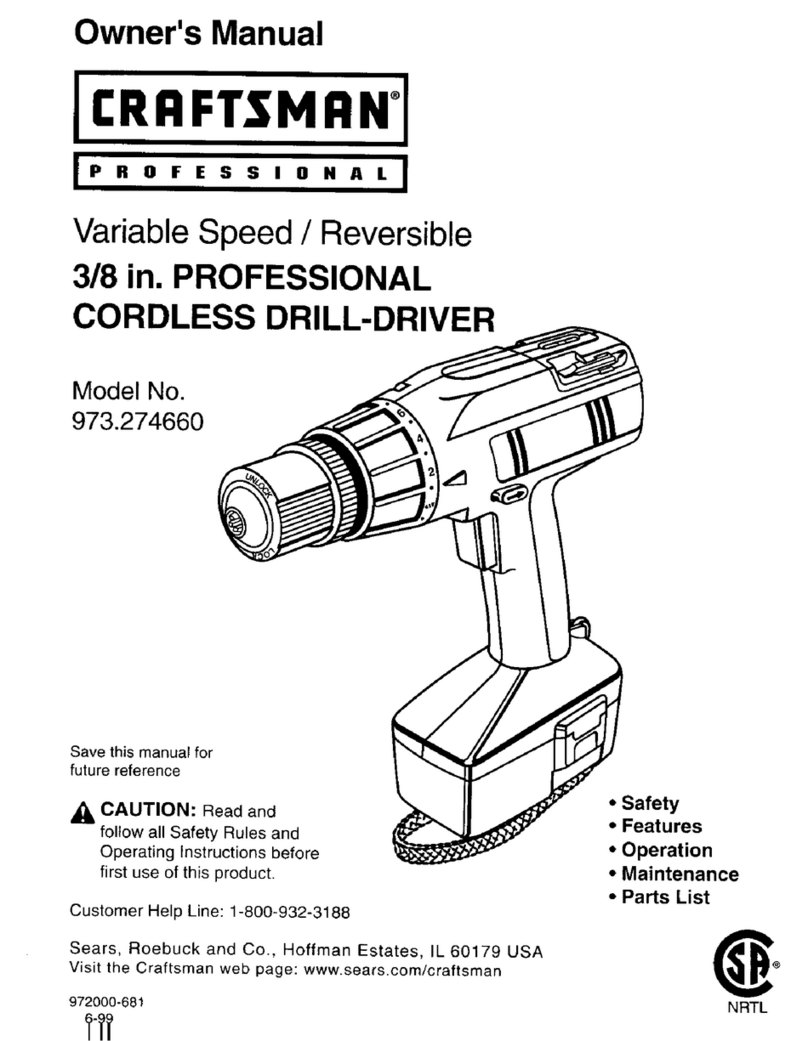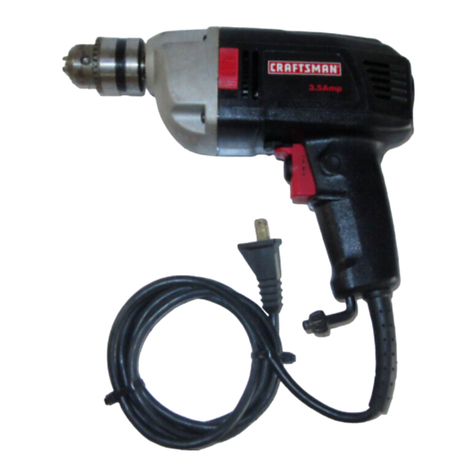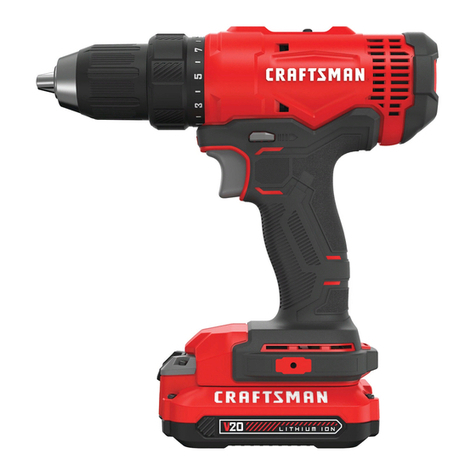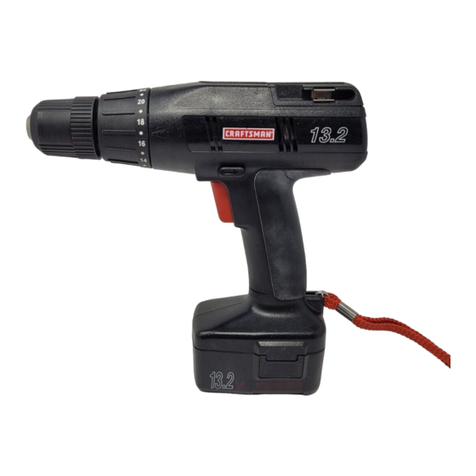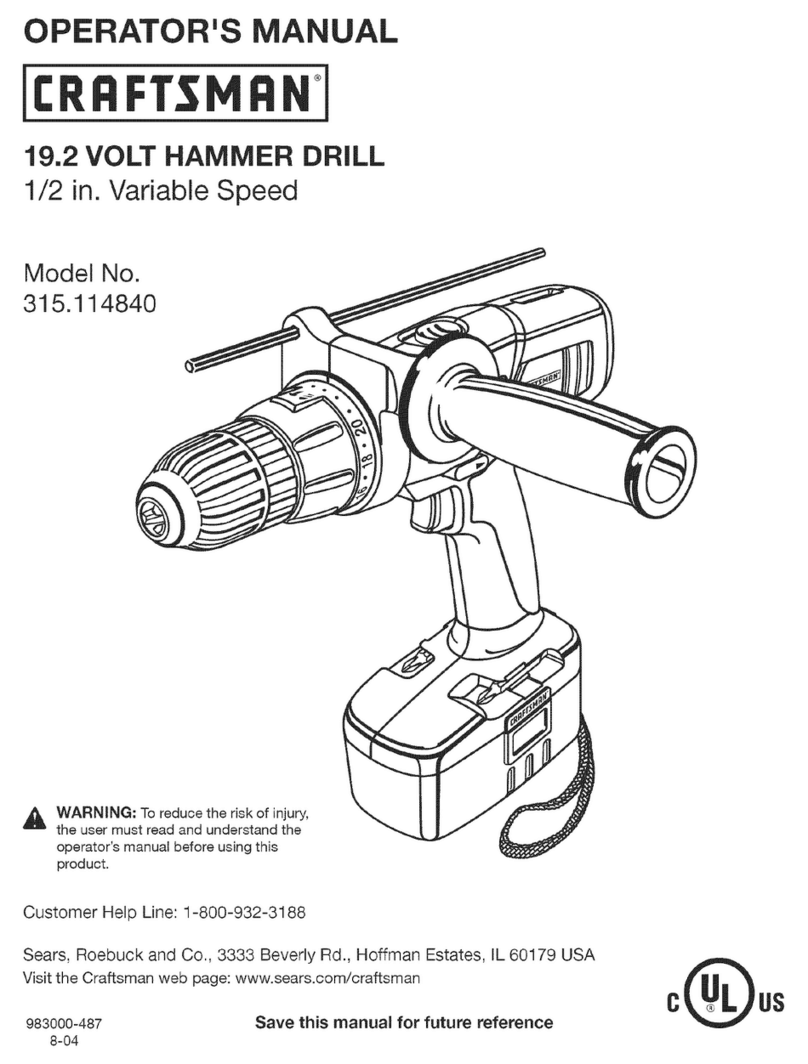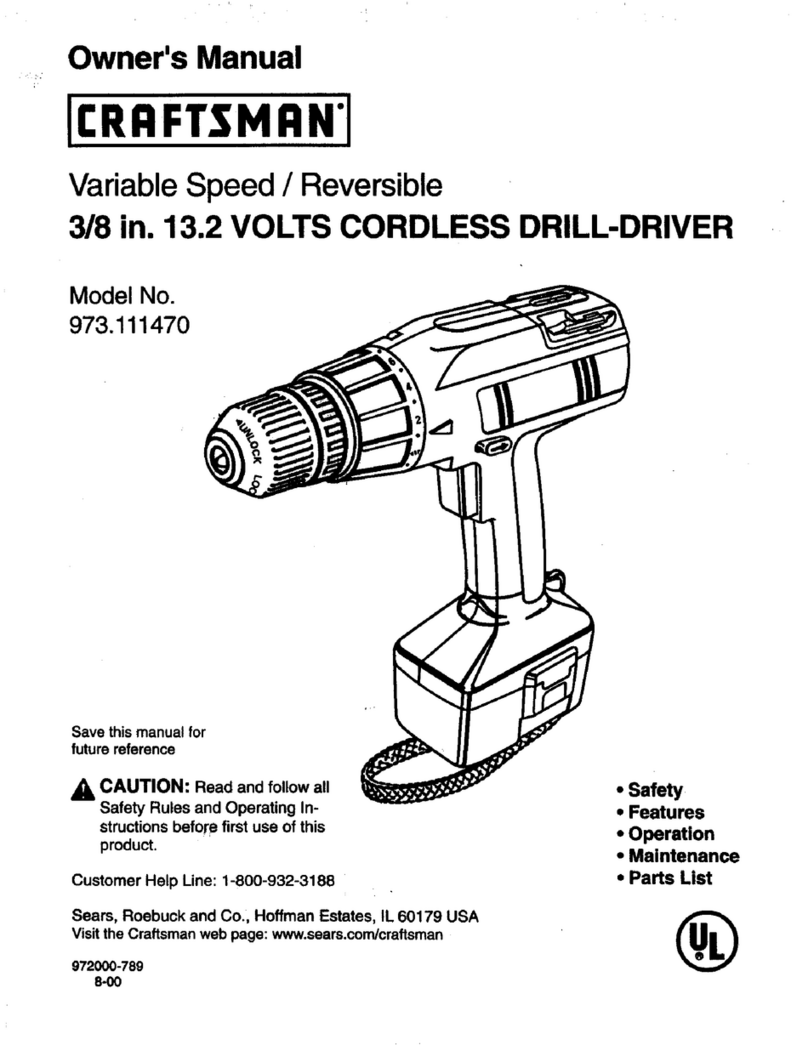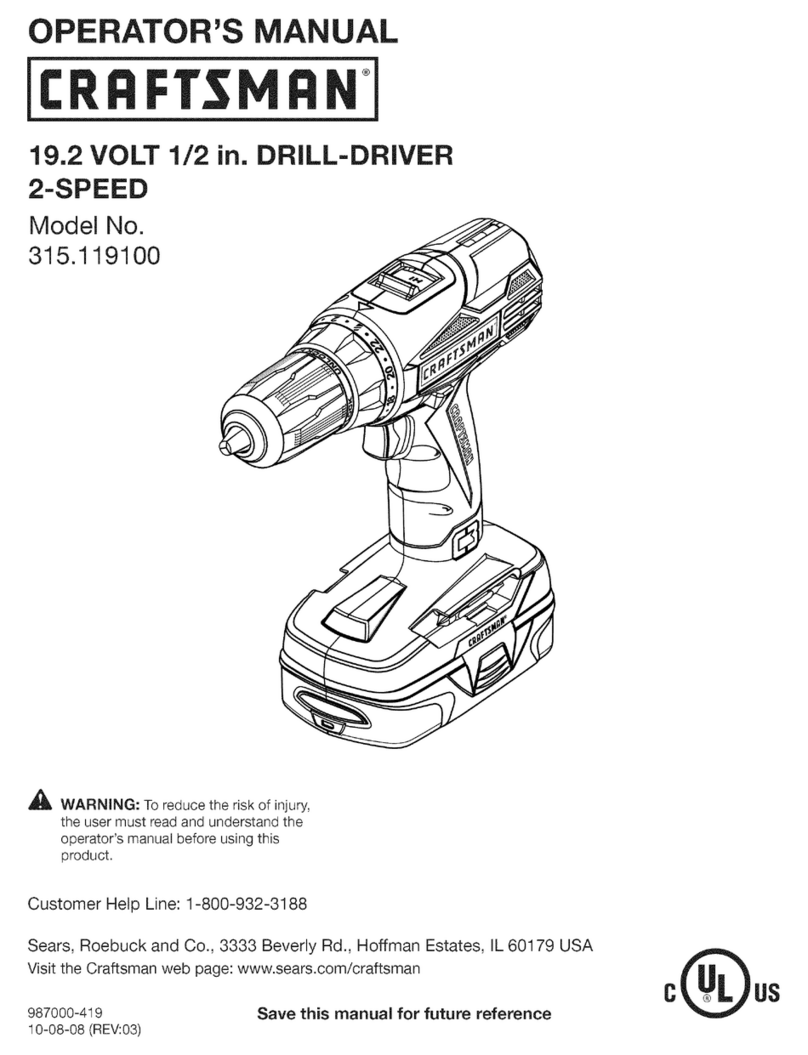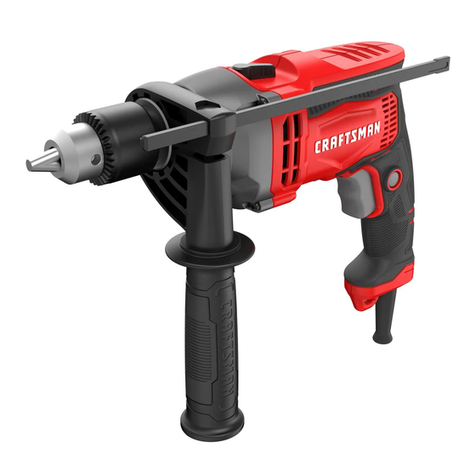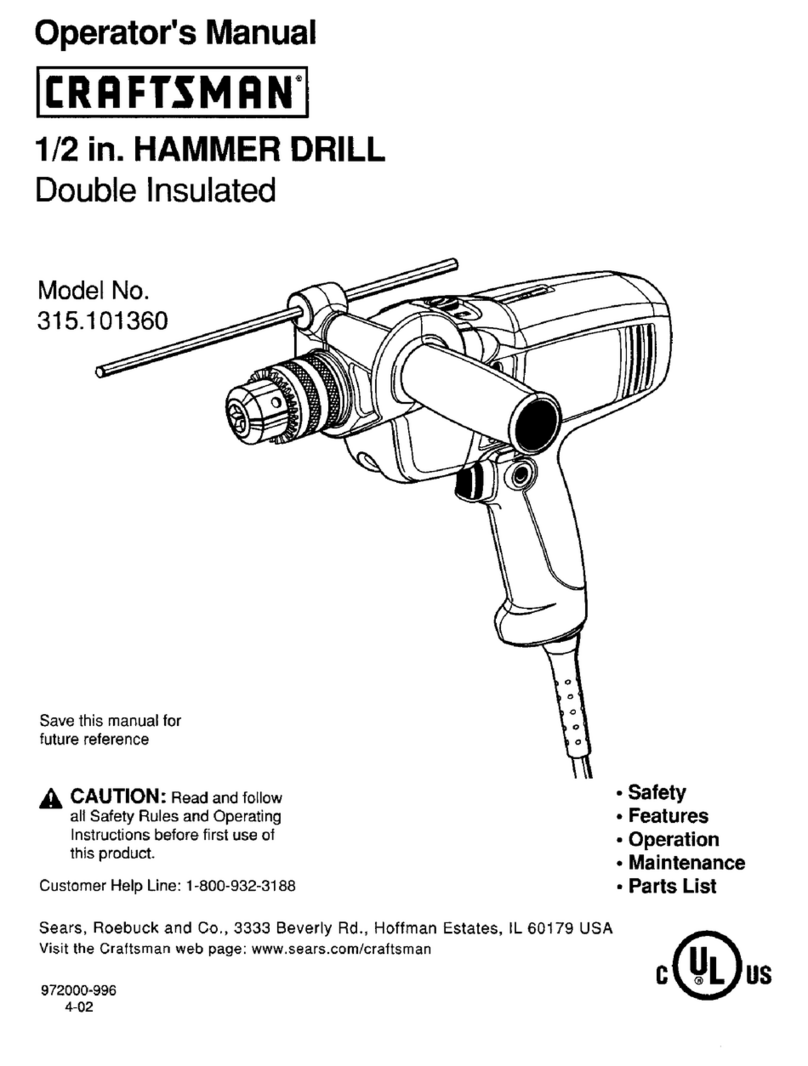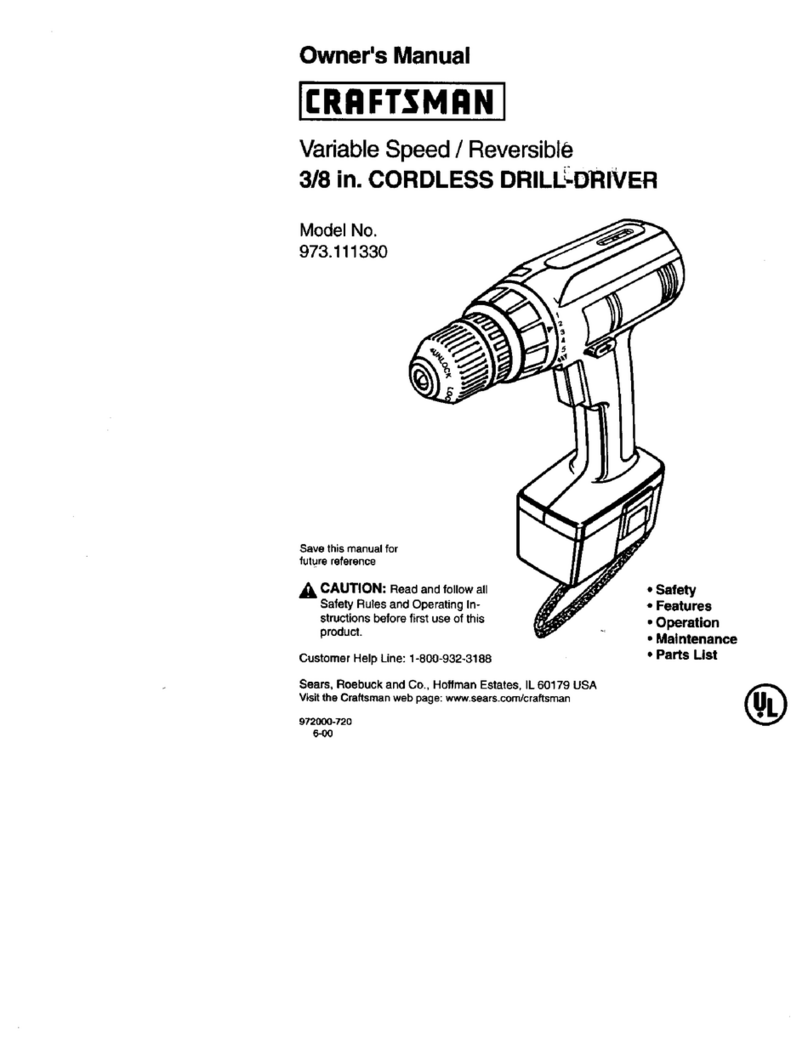
5
• ANSI S12.6 (S3.19) hearing protection,
•
NIOSH/OSHA/MSHA respiratory protection.
• lead from lead-based paints,
• crystalline silica from bricks and cement and other masonry products, and
• arsenic and chromium from chemically-treated lumber.
Your risk from these exposures varies, depending on how often you do this type of work. To reduce
your exposure to these chemicals: work in a well ventilated area, and work with approved safety
equipment, such as those dust masks that are specially designed to filter out microscopic particles.
•
Allowing dust to get into your mouth, eyes, or lay on the skin may promote
absorption of harmful chemicals.
Use of this tool can generate and/or disperse dust, which may cause serious and
permanent respiratory or other injury. Always use NIOSH/OSHA approved respiratory protection
appropriate for the dust exposure. Direct particles away from face and body.
Do not operate this tool for long periods of time. Vibration caused by the
operating action of this tool may cause permanent injury to fingers, hands, and arms. Use
gloves to provide extra cushion, take frequent rest periods, and limit daily time of use.
The tool may stand upright on the
battery pack but may be easily knocked over. Serious personal injury may result.
use extra care when working into a
corner or edge because a sudden, sharp movement of the tool may be experienced when the
wheel or other accessory contacts a secondary surface or a surface edge.
•
When using an extension cord, be
sure to use one heavy enough to carry
the current your product will draw. An
undersized cord will cause a drop in
line voltage resulting in loss of power
and overheating. The following table
shows the correct size to use depending
on cord length and nameplate ampere
rating. If in doubt, use the next heavier
gage. The smaller the gage number, the
heavier the cord.
The label on your tool may include the following symbols. The symbols and their definitions are as follows:
V .................. volts A ...................amperes
Hz ................ hertz W ..................watts
min .............. minutes or AC .......alternating current
or DC ... direct current no..................no load speed
................ Class I Construction ..................earthing terminal
(grounded) ................safety alert symbol
................ Class II Construction .../min or rpm...revolutions or
(double insulated) reciprocation per minute
............
Read instruction manual before use
..................Use proper respiratory protection
................ Use proper eye protection ..................Use proper hearing protection
SPM ............Strokes per minute
3/8 -11 …………. Arbor size and Thread count per inch
120V 0-25 26-50 51-100 101-150
(0-7,6m) (7,6-15,2m) (15,2-30,4m) (30,4-45,7m)
240V 0-50 51-100 101-200 201-300
(0-15,2m) (15,2-30,4m) (30,4-60,9m) (60,9-91,4m)
More Not more American Wire Gauge
Than Than
0 - 6 18 16 16 14
6 - 10 18 16 14 12
10 - 12 16 16 14 12
12 - 16 14 12 Not Recommended
